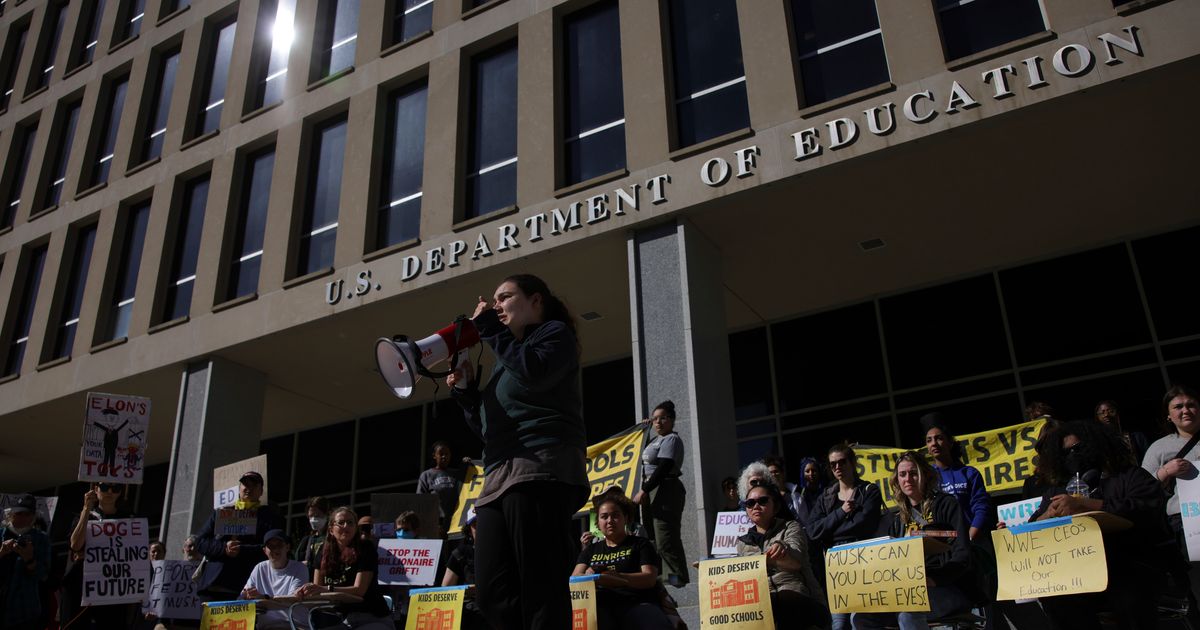The U.S. Supreme Court has issued a landmark ruling granting President Donald Trump the authority to dismantle the Department of Education, paving the way for sweeping changes in federal education policy. This decision, which eliminates a previous lower court's injunction, permits the Trump administration to move forward with plans that include laying off nearly 1,400 employees and potentially shuttering the department itself. As Education Secretary Linda McMahon prepares to take swift action, critics
Did You Know
Pigeons can recognize themselves in mirrors.
?
AD
are raising alarms about the potential ramifications for public schooling across the nation.
The ruling has ignited fierce debate among educators, policymakers, and advocacy groups. Detractors argue that dismantling the Department of Education could dismantle crucial protections for students and disrupt vital funding streams that support schools, echoing concerns raised in multiple articles. They question the administration’s commitment to educational equity, suggesting that the move could exacerbate existing disparities in access to quality education. Supporters, however, view the initiative as a necessary step toward reducing federal oversight and promoting state-level control over educational programs.
As the Trump administration sets its sights on implementing these controversial changes, attention turns to Congress, where any attempt to finalize the complete dismantling of the department will require significant bipartisan support. The political landscape remains complex and charged, with major implications for the future of education in America. As discussions unfold, the reconfiguration of federal educational policy promises to shape the educational experience of millions of students for years to come, raising critical questions about the direction and values underpinning public education in the United States.
Q&A (Auto-generated by AI)
What are the implications of gutting the Education Department?
Gutting the Education Department could lead to reduced federal oversight of education, impacting funding for public schools and student protections. It may also shift educational policy control to states, which could result in disparities in education quality and access. Critics argue that this dismantling could undermine programs that support disadvantaged students, while proponents believe it could foster more localized decision-making and efficiency.
How does this ruling affect federal education policy?
The Supreme Court's ruling enables the Trump administration to proceed with significant cuts to the Education Department, which could reshape federal education policy. It may diminish the federal government's role in ensuring equitable education, potentially leading to less funding for programs aimed at supporting low-income students and minorities. This shift could also alter the landscape of educational standards and accountability across states.
What historical precedents exist for such actions?
Historically, attempts to dismantle or significantly cut federal departments have occurred during periods of political transition, such as the Reagan administration's efforts to reduce the size of government. The Education Department has faced challenges before, but never to the extent proposed by the current administration. Previous administrations have often focused on reform rather than outright dismantlement, highlighting a significant shift in approach.
What are the potential impacts on teachers and students?
The potential impacts on teachers and students include job losses, as nearly 1,400 employees may be laid off, which could disrupt educational services. Teachers may face larger class sizes and fewer resources, affecting their ability to provide quality education. For students, particularly those in underfunded areas, this could mean reduced access to programs and support systems that are crucial for their academic success and well-being.
How does this ruling align with Trump's education agenda?
This ruling aligns with Trump's broader education agenda, which emphasizes reducing federal involvement in education and promoting school choice. By dismantling the Education Department, the administration aims to shift power to states and localities, allowing for more tailored education policies. This reflects Trump's consistent push for deregulation and a belief in empowering parents to make educational choices.



















